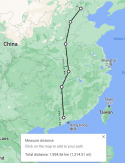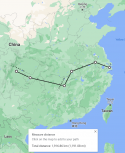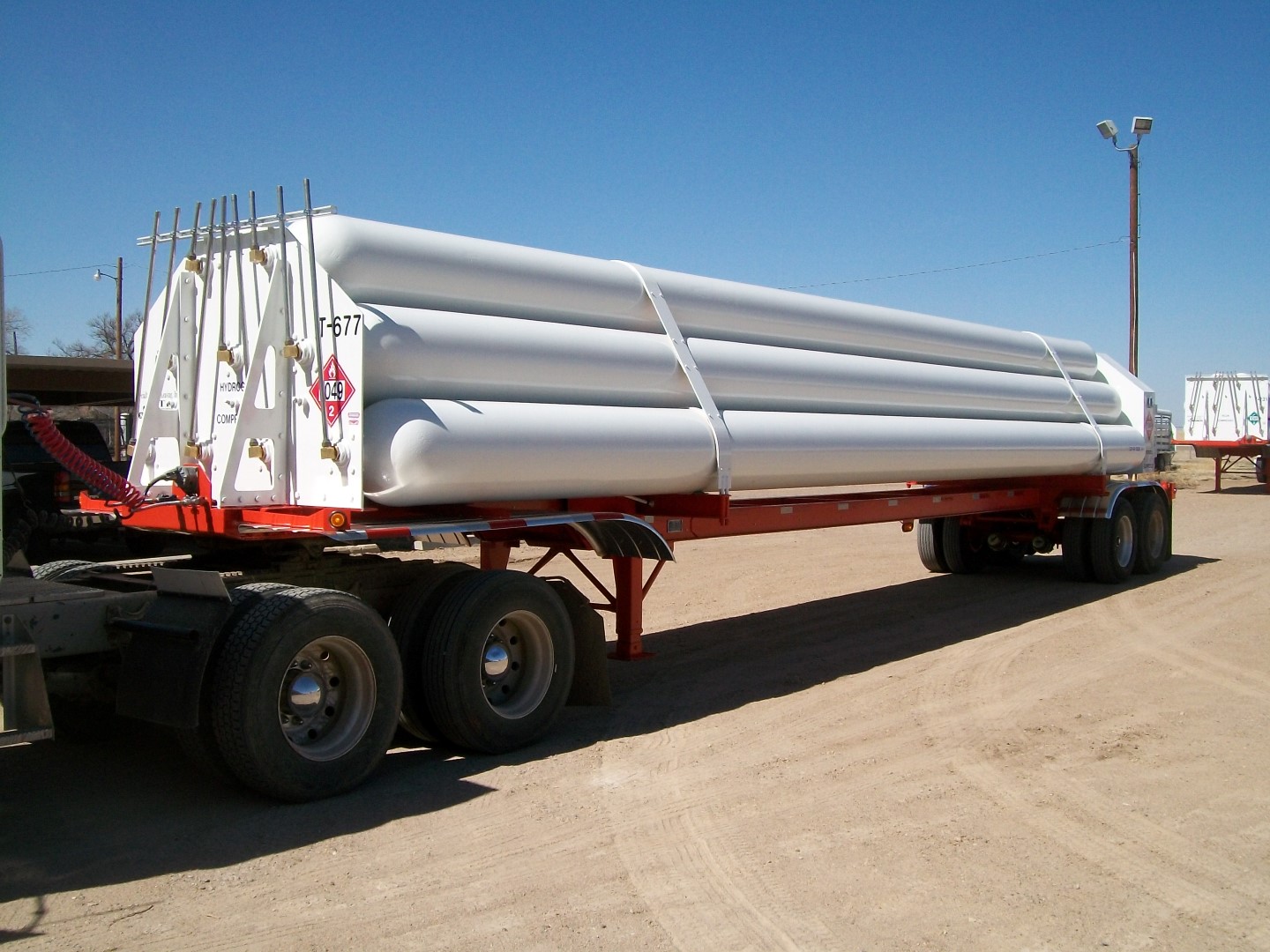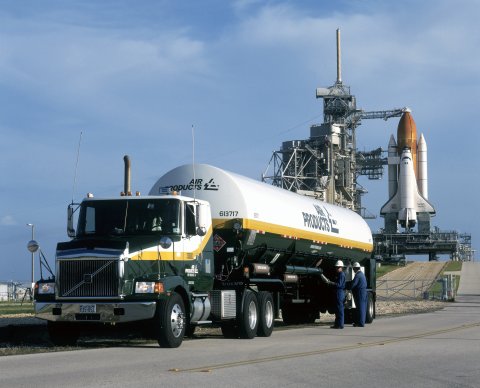I know how hard this is, congrats to the researchers.Chinese researchers demo'ed terebit (1.02T bps) free space optical communication (aka network on laser beams) between two buildings of 1km apart.
The work is based on soliton microcomb which is more power efficient and compact than systems that use the wavelength-division multiplexing (WDM) technology. Although WDM-based systems have had demo of higher bandwidth up to 10T bps.
Paper in English:
News release in Chinese:
You are using an out of date browser. It may not display this or other websites correctly.
You should upgrade or use an alternative browser.
You should upgrade or use an alternative browser.
News on China's scientific and technological development.
- Thread starter Quickie
- Start date
Chinese researchers greatly increased speed and lifespan of organic electrochemical transistors (OECT).
Paper in English:
News in Chinese:
1月19日,电子科技大学测试技术与仪器研究所程玉华课题组在《自然》发表有机电化学晶体管及其互补电路方面的最新研究成果。该研究针对测试数据的源头基础器件,首次提出了一种基于紫外光固化沟道的新型垂直结构,破解了电化学晶体管大规模可靠制备的世界性难题,是新型传感和精密测试领域的重大突破。
有机电化学晶体管(OECT)及其电路得益于其超低的驱动电压、低功耗、高跨导及生物相容性等优势,广泛应用于下一代智能传感、生物电子、可穿戴电子和人工神经态电子领域。然而,当前基于常规平面结构的OECT尚存在一系列问题,包括较差的器件稳定性、较慢的电化学反应及开关速度、较低的集成密度和极差的N型器件性能,极大限制了其进一步发展与集成应用。
面对上述挑战,研究团队利用纳米限域下离子偏移增强的新机制,采用一种独创的垂直结构,实现了可大规模制备的具有高度匹配P/N型性能的OECT。这种垂直型OECT(vOECT)在低于0.7 V的驱动电压下具有高于1 kA/cm2的电流密度、高达0.4 S的跨导、快于1 ms的开关速率及超过5万次的稳定循环,在器件性能指标上全面超越了现有OECT。基于此,可进一步构建三维垂直堆叠的互补电路,在更小的单位尺寸上进一步提升电路集成密度;其具有在0.7 V驱动电压下近150的电压增益,远高于当前报道的各类基于OECT的反相器。该vOECT还可以集成到振荡器、各类逻辑门等更加复杂的电路中。
该研究分别在P型及N型OECT中实现了跨导10多倍和近1000倍的指标提升,且将N型OECT中最高千次的循环稳定性提升到了5万次以上,并实现了P/N型OECT在跨导、稳定性、开关速率、集成密度、制备成本及工艺可靠性方面的全面超越。
Paper in English:
Vertical organic electrochemical transistors for complementary circuits
Abstract
Organic electrochemical transistors (OECTs) and OECT-based circuitry offer great potential in bioelectronics, wearable electronics and artificial neuromorphic electronics because of their exceptionally low driving voltages (<1 V), low power consumption (<1 µW), high transconductances (>10 mS) and biocompatibility,,,,. However, the successful realization of critical complementary logic OECTs is currently limited by temporal and/or operational instability, slow redox processes and/or switching, incompatibility with high-density monolithic integration and inferior n-type OECT performance,,. Here we demonstrate p- and n-type vertical OECTs with balanced and ultra-high performance by blending redox-active semiconducting polymers with a redox-inactive photocurable and/or photopatternable polymer to form an ion-permeable semiconducting channel, implemented in a simple, scalable vertical architecture that has a dense, impermeable top contact. Footprint current densities exceeding 1 kA cm−2 at less than ±0.7 V, transconductances of 0.2–0.4 S, short transient times of less than 1 ms and ultra-stable switching (>50,000 cycles) are achieved in, to our knowledge, the first vertically stacked complementary vertical OECT logic circuits. This architecture opens many possibilities for fundamental studies of organic semiconductor redox chemistry and physics in nanoscopically confined spaces, without macroscopic electrolyte contact, as well as wearable and implantable device applications.News in Chinese:
研究破解电化学晶体管大规模可靠制备难题
1月19日,电子科技大学测试技术与仪器研究所程玉华课题组在《自然》发表有机电化学晶体管及其互补电路方面的最新研究成果。该研究针对测试数据的源头基础器件,首次提出了一种基于紫外光固化沟道的新型垂直结构,破解了电化学晶体管大规模可靠制备的世界性难题,是新型传感和精密测试领域的重大突破。
有机电化学晶体管(OECT)及其电路得益于其超低的驱动电压、低功耗、高跨导及生物相容性等优势,广泛应用于下一代智能传感、生物电子、可穿戴电子和人工神经态电子领域。然而,当前基于常规平面结构的OECT尚存在一系列问题,包括较差的器件稳定性、较慢的电化学反应及开关速度、较低的集成密度和极差的N型器件性能,极大限制了其进一步发展与集成应用。
面对上述挑战,研究团队利用纳米限域下离子偏移增强的新机制,采用一种独创的垂直结构,实现了可大规模制备的具有高度匹配P/N型性能的OECT。这种垂直型OECT(vOECT)在低于0.7 V的驱动电压下具有高于1 kA/cm2的电流密度、高达0.4 S的跨导、快于1 ms的开关速率及超过5万次的稳定循环,在器件性能指标上全面超越了现有OECT。基于此,可进一步构建三维垂直堆叠的互补电路,在更小的单位尺寸上进一步提升电路集成密度;其具有在0.7 V驱动电压下近150的电压增益,远高于当前报道的各类基于OECT的反相器。该vOECT还可以集成到振荡器、各类逻辑门等更加复杂的电路中。
该研究分别在P型及N型OECT中实现了跨导10多倍和近1000倍的指标提升,且将N型OECT中最高千次的循环稳定性提升到了5万次以上,并实现了P/N型OECT在跨导、稳定性、开关速率、集成密度、制备成本及工艺可靠性方面的全面超越。
China's hyperloop successfully conducted its first test runs, which is aiming for the top speed of more than 1000 kilometers per hour.
Ma Yilong, where's yours?
Ma Yilong, where's yours?
As a further extension of the news.China's hyperloop successfully conducted its first test runs, which is aiming for the top speed of more than 1000 kilometers per hour.
Ma Yilong, where's yours?
Either way, let's take a couple of examples:
1. A north-south UHSR line that runs the Beijing-Shijiazhuang-Zhengzhou-Wuhan-Changsha-Guangzhou route. Total length around 1950 kilometers.

2. An east-west UHSR line that runs the Shanghai-Nanjing-Wuhan-Changsha-Chongqing-Chengdu route. Total length around 1900 kilometers.

Assuming that the UHSRs run at a maximum commerical speed of around 900 kilometers (since no trains run at its maximum possible speed during commerical operations). That means both the direct Beijing-Guangzhou route and the direct Shanghai-Chengdu route would take around 2.5-3 hours, counting in the factor that the UHSR has to slow down when rounding curves, plus the acceleration and decceleration time spend at the start and end of the journey.
From this, there are major caveats that the Chinese planners would have to consider:
1. Speed of travel - If the UHSR has to travel close to/at its maximum commercial speed for as long as possible, how many stops at in-between cities could the UHSR afford, considering the extra time penalties from acceleration from and decceleration to stations?
2. Time of travel - If the UHSR has to travel the entire route in the shortest amount of time possible, how many stops at in-between cities has to be excluded from the route in order to remove the extra time penalties from stopping at stations in-between?
3. Ridership - If the UHSR is to receive as many ridership as possible from cities in-between along the entire route, how much speed and time can it afford to sacrifice - And hence, how much wasting of energy, efficiency and cost would this incur?
On the other hand, if the mass adoption of hyperloop technology in intercity passenger transportation becomes a reality, how would this affect the competition between ultra-high speed rail lines and airline companies in the coming future?
Say, the UHSR runs at a top speed of 900 kilometers per hour (since trains don't run at top speed during commercial services). Most commerical jetliners today fly at around Mach 0.78, or around 960 kilometers per hour, but that is only while cruising. Commerical jetliners don't fly at that speed throughout the entire flight.
As per mentioned above, the time taken for both UHSRs to travel the entire routes without stopping would be around 2.5-3 hours. For comparison, a direct Beijing-Guangzhou flight takes around 3 hours and 20 minutes, while a direct Shanghai-Chengdu flight takes around 3 hours and 30 minutes.
When the UHSR is up and running, the competition between rail companies and airline companies in China is going to become even fiercer. This is because more people are going for the UHSR - All thanks to the time spent between origins/destinations and train stations, and time spent in train stations for boarding and disembarking are going to be shorter than that for airports, not counting the ease of accessibility as there is no need for immigration and security check procedures. The lower rates of on-time arrivals of Chinese airlines thanks to large portions of the Chinese airspace being off-limits to commercial planes for use by the PLA certainly doesn't help either.
Perhaps we could be reaching the limits of speed of travel for intercity routes that are of short to medium distances. Perhaps 600-700 kilometers per hour would be a hard cap onto how fast a land transportation vehicle could go for these routes without loosing too much on efficiency, energy wastage and cost incured. I'm thinking that hyperloop technology would only be useful for long and ultra-long distance routes, such as the Beijing-Kunming-Bangkok-Singapore route or the Shanghai-Chengdu-Urumqi-Astana route.
supercat
Colonel
Autonomous train for Istanbul:
As a further extension of the news.
Either way, let's take a couple of examples:
1. A north-south UHSR line that runs the Beijing-Shijiazhuang-Zhengzhou-Wuhan-Changsha-Guangzhou route. Total length around 1950 kilometers.
View attachment 105728
2. An east-west UHSR line that runs the Shanghai-Nanjing-Wuhan-Changsha-Chongqing-Chengdu route. Total length around 1900 kilometers.
View attachment 105729
Assuming that the UHSRs run at a maximum commerical speed of around 900 kilometers (since no trains run at its maximum possible speed during commerical operations). That means both the direct Beijing-Guangzhou route and the direct Shanghai-Chengdu route would take around 2.5-3 hours, counting in the factor that the UHSR has to slow down when rounding curves, plus the acceleration and decceleration time spend at the start and end of the journey.
From this, there are major caveats that the Chinese planners would have to consider:
1. Speed of travel - If the UHSR has to travel close to/at its maximum commercial speed for as long as possible, how many stops at in-between cities could the UHSR afford, considering the extra time penalties from acceleration from and decceleration to stations?
2. Time of travel - If the UHSR has to travel the entire route in the shortest amount of time possible, how many stops at in-between cities has to be excluded from the route in order to remove the extra time penalties from stopping at stations in-between?
3. Ridership - If the UHSR is to receive as many ridership as possible from cities in-between along the entire route, how much speed and time can it afford to sacrifice - And hence, how much wasting of energy, efficiency and cost would this incur?
On the other hand, if the mass adoption of hyperloop technology in intercity passenger transportation becomes a reality, how would this affect the competition between ultra-high speed rail lines and airline companies in the coming future?
Say, the UHSR runs at a top speed of 900 kilometers per hour (since trains don't run at top speed during commercial services). Most commerical jetliners today fly at around Mach 0.78, or around 960 kilometers per hour, but that is only while cruising. Commerical jetliners don't fly at that speed throughout the entire flight.
As per mentioned above, the time taken for both UHSRs to travel the entire routes without stopping would be around 2.5-3 hours. For comparison, a direct Beijing-Guangzhou flight takes around 3 hours and 20 minutes, while a direct Shanghai-Chengdu flight takes around 3 hours and 30 minutes.
When the UHSR is up and running, the competition between rail companies and airline companies in China is going to become even fiercer. This is because more people are going for the UHSR - All thanks to the time spent between origins/destinations and train stations, and time spent in train stations for boarding and disembarking are going to be shorter than that for airports, not counting the ease of accessibility as there is no need for immigration and security check procedures. The lower rates of on-time arrivals of Chinese airlines thanks to large portions of the Chinese airspace being off-limits to commercial planes for use by the PLA certainly doesn't help either.
Perhaps we could be reaching the limits of speed of travel for intercity routes that are of short to medium distances. Perhaps 600-700 kilometers per hour would be a hard cap onto how fast a land transportation vehicle could go for these routes without loosing too much on efficiency, energy wastage and cost incured. I'm thinking that hyperloop technology would only be useful for long and ultra-long distance routes, such as the Beijing-Kunming-Bangkok-Singapore route or the Shanghai-Chengdu-Urumqi-Astana route.
IMHO, for all 1, 2, and 3, only point-to-point with passing lanes can work. Maglev at 600 kph sounds more prudent unless ET can offer overwhelming speed-up over planes (say 2,000 kpm) but even so, I don't see any demand/economic justifications for that.
The proposed routes look good for maglev too
I don't know if Vanadium flow battery has a place in the future energy storage, but they are certainly investing money into it
This new "battery bank" is a 60 kw Vanadium redox flow battery pack.
They have a power bank of 134 by 119m allowing for over 700 storage tanks. A 100 MW ESS station was connected to grid in May. It started discharging in October from full charge and held 400k KWh of energy.
This new "battery bank" is a 60 kw Vanadium redox flow battery pack.
They have a power bank of 134 by 119m allowing for over 700 storage tanks. A 100 MW ESS station was connected to grid in May. It started discharging in October from full charge and held 400k KWh of energy.
broadsword
Brigadier
What is the reason for your doubt?I don't know if Vanadium flow battery has a place in the future energy storage, but they are certainly investing money into it
for example, can it be competitive vs sodium ion batteries in the future or water storage and such. The infrastructure & supply chain for lithium and sodium ion batteries will be so well established by the time this gets going.What is the reason for your doubt?
And if hydrogen fuel cell technology keeps improving, it will be something you can transport via pipeline or converted into ammonia.
Edit: more on hydrogen transportation
Today, hydrogen is transported from the point of production to the point of use via pipeline and over the road in cryogenic liquid tanker trucks or gaseous tube trailers.

I guess this is what gaseous tube trailers look like

liquid hydrogen tanker
I doubt you can transport vanadium flow battery with a truck.
Last edited:
pump hydroelectric storages need to be located at places with certain geographical featuresfor example, can it be competitive vs sodium ion batteries in the future or water storage and such. The infrastructure & supply chain for lithium and sodium ion batteries will be so well established by the time this gets going.
And if hydrogen fuel cell technology keeps improving, it will be something you can transport via pipeline or converted into ammonia.
hydrogen is very inefficient as indicated by the graph you shared earlier
I don't think we know what other elements are needed in sodium batteries (other than sodium of course), they may be expensive too.
The Chinese government seems to be funding every new tech right now.
